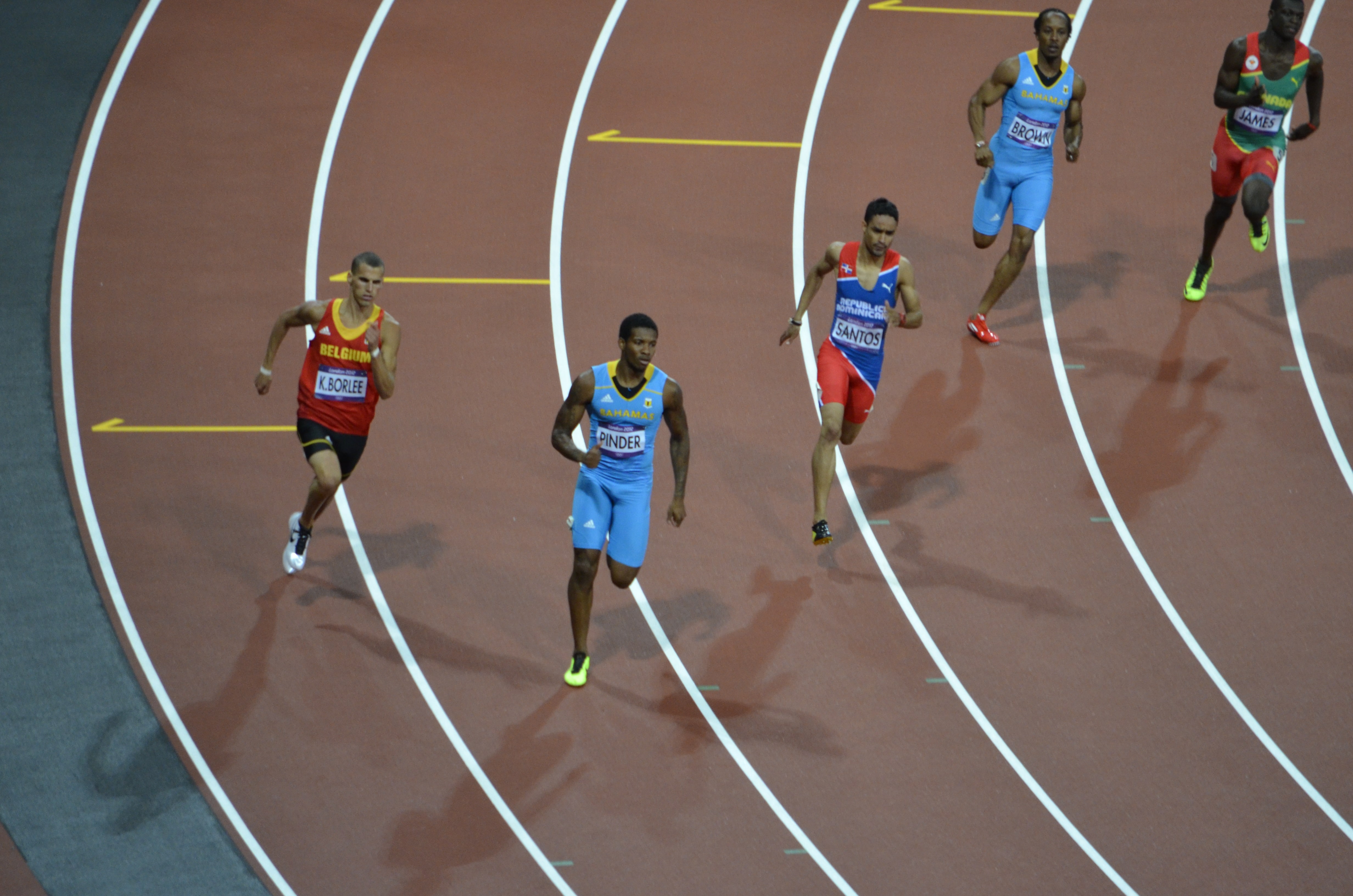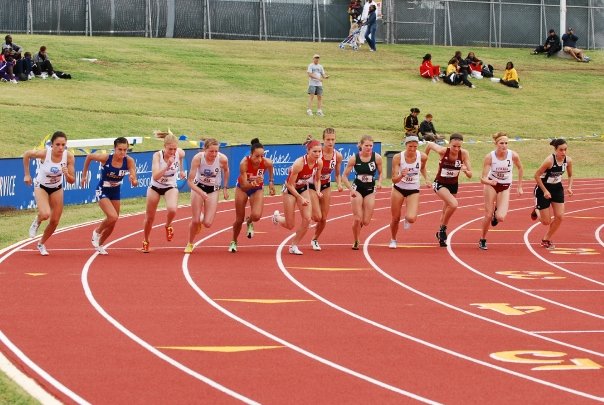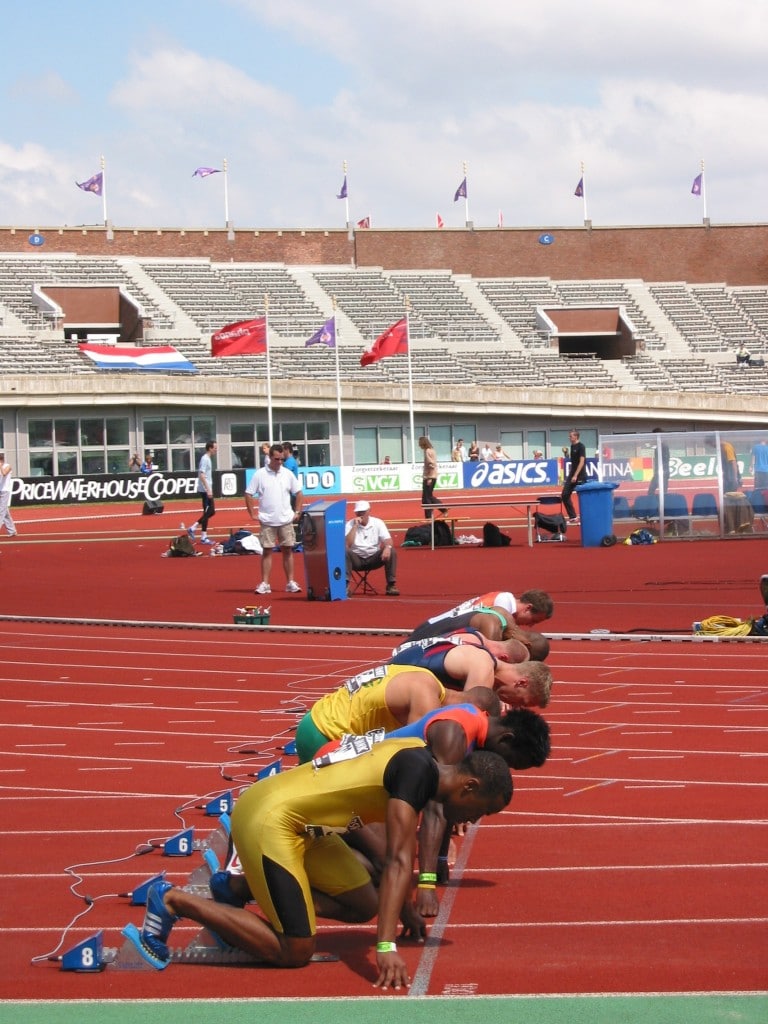On an anecdotal level, most masters runners tend to gravitate toward longer events—marathons and ultras seem to be a good fit for older runners who maybe don’t have as much “snap” in their legs as when they were younger.
Sure, they might venture onto the track for speed work, but racing on the track?
For as many as 8,100 masters in the United States, however, track meets are the events of choice, according to USATF (U.S.A. Track and Field) estimates.
For these events, masters applies to anyone 35 and over, and meets take place at both indoor and outdoor venues. While masters runners are not what generally comes to mind for the shorter, speedy track distances, masters runners can be quite impressive nonetheless.
We are going to show you how many masters runners only took up track racing later in life, and how they are now running better than ever. After some inspiration, we are going to share the track basics to get runners of every age ready for racing on the track.
Who competes in track races as a master?
Now:
The current men’s record for the mile, for instance, is 3:51 for the 35-yr. old age group. For a 50-yr. old, it stands at 4:25.
On the female side, the mile record for a 35-yr. old is 4:17 and 5:00 for a 50-yr. old. Nothing to sneeze at!
Changing attitudes as you age
Arlington, Va., -based 49-year old Alisa Harvey is the current American masters record holder at the indoor mile for both the 35- and 40-yr. old age groups, and the 40-yr. old age group for the 800 and the mile outdoors. She’s been competing since high school and still enjoys the track as a masters, although she trains differently for the events today. “I consider myself to be a track runner,” she says. ”This is where it all began for me. I have always loved the feeling of running fast.”
Before the age of 40, Harvey took to the track as many as three times per week, she says. “Now I am only on the track twice a week,” she says. “I used to follow up each track session with a weight-room session, but now I save strength work for my distance days.”
Harvey says that as a masters, she has found that she is too fatigued post-track workout to handle a quality strength session. She tends to incorporate push-ups, pull-ups, and other strength moves on her easier days.
She also spends more time training for shorter track distances, a departure from her younger days. “I haven’t run the 3,000 or 5,000 since becoming a master,” she says. “I just can’t muster the desire for so many laps now.”
Harvey keeps things fresh by training and competing on the road, a place where she also excels. “I am motivated to run 5k, 8k, 10k, and even longer distances since turning 40,” she says.
It get’s better:
For 42-yr. old Brian Shadrick, of Columbia, Md., competing on the track as a masters has served to quell his competitive juices. Shadrick ran cross-country and track in high school and for a year in college, but took a break from the sport for 20 years.
When he returned to running about three years ago, it was primarily to get back into shape and run a few 5ks. “I didn’t even know about masters track,” he says.
But a local friend and coach told him about some all-comers events and since he had always gravitated toward shorter, speedier distances, he decided to give it a go. “I started racing distances from the 400 to the mile,” Shadrick explains, “and now the 800 and mile are my niche.”
Like many of his road counterparts, Shadrick has learned the hard way, however, that training as a masters is different than when he was younger. “I never thought much about training when I was in high school,” he admits. “I just did what my coaches told me to do.”
Now, however, injuries have taught Shadrick to mix things up and take it easier.
“Start slowly and ease into speed work,” he advises. “Pushing too hard, too fast is the easiest way to get injured.”
Training for success on the track
In spite of the injury risk, however, Harvey says that masters runners desiring to race on the track need to train there, too. “It is fine to use the roads, parks, gyms, etc. to gain running fitness,” she says, “but actually getting on a track surface and performing running drills, strides, sprints, and interval workouts will prepare you to race on the track.”
Finding a masters track race
Masters track meets are not very common in some areas, but masters athletes are welcome at all-comers events. If all else fails, check your local colleges for “open” meets and see if you can find a category that fits your age and/or skill level.
Here’s the deal:
If you think the track might be your jam as a masters, be willing to get comfortable with the uncomfortable, Harvey adds. “Don’t be afraid to try an event that is outside your comfort zone,” she says. “The challenge of a shorter or longer event is usually great training for your preferred event.”
If you’re interested in racing on the track as a masters, finding the events might be your biggest challenge—they aren’t very common in some areas of the country. But they are out there and we’ve got a list of resources to help:
- USATF—You can find an entire page dedicated to masters events for track and field here.
- National Masters News—A 40-yr. old publication dedicated to masters running, track in particular.
- Masterstrack.com—Dubbed as the home page for adult age-group track and field.
- MasterHistory.org—Providing the historical background on masters running
What about if I have never raced on the track before?
That’s all very well us sharing stories with you, and informing you how you can find a local race near you, but what if you are one of the many runners who started running long after high school and college? What if you have never raced on a track before, and have no idea about how to go about it?
Well, first we will tell you to head over to our post about How a 5k or 10k Training Plan is Structured with our former Director of coaching, Blake Boldon. That will give you more of an understanding of the type of training this requires, this will be especially useful if you are used to racing half marathons and further.
However, to round up this post today, we would like to share some of the track basics, as well as the words you may hear regarding track workouts.
The Basics
One lap of an outdoor track is 400m around. Here are the breakdowns of the various track races and their distances:
- 400m – 1 lap
- 800m – 2 laps
- 1500m- 3 3/4 laps
- Mile- 4
- 3000m – 7 1/2 laps
- 5000m – 12 1/2 laps
- 10000m – 25 laps
If you are choosing to race indoor, it becomes a little more tricky; tracks vary from 180m around to 300m, but you will be able to find out from your local track which size it is, and therefore how many laps around your race of choice will be.
A track is made up of 6-8 lanes, and those lanes have lines which stagger start lines, meaning that everyone runs the same distance. If you are on one of the outside lanes, you will start further around the track. This can be confusing at first as you will be “ahead” of the competitors on the inside lanes, but around the final turn, things will balance out.
If you are racing a 400m and below, you will start in individual lanes, and will stay in your lane for the duration of the race as you see in the photo above. If you are racing a 1500m and above, you will start using what is called a “waterfall” start. This is where all competitors will line up, closely packed on a slight curve.
You might be wondering:
What about distances between 400m-800m?
Those can be a little more tricky. Some races use a waterfall start, and others use lanes until a certain point in the race (usually about 100m into the race). Some races even have 2 runners per lane. You will have to check with one of the officials what the procedure is if you are racing one of these distances.
Relay races are common at track meets, and the following are common relay events:
- 4x100m (all 4 runners run 100m)
- 4x400m (all 4 runners run 400m)
- Distance Medley Relay- Indoor only (one runner runs each distance- 1200m, 400m, 800m, 1600m)
The Lingo
When you start spending time at a track, you will hear words that can make it sound like you have landed in a foreign country as you cannot understand what they are saying. Here are some of the most common track words:
Check-in- The tent/desk you need to go to 30 minutes- 1 hour before your race to pick up your numbers.
Numbers- Your personal bib number to wear (like any other road race), plus often, two sticky numbers to go on your hips and/or shoulder for the timing staff to use to identify you in a close finish.
Spikes- The best style of shoes for a track race. These shoes are lighter and thinner than other shoes. On the bottom will be a spike “plate” where you will screw in 1/4 inch “spikes” to give you better grip on the track surface.
Blocks- If you are competing in a race under 400m, you have the option to use starting blocks, which prop your feet up to help you start faster (if used correctly).
The Bell- In races more than 400m, a bell will ring when you have one lap remaining.
Kick- Using your speed at the end of a race to run significantly faster than you have been for the rest of the race. Some runners will have more of a “kick” than others.
Rabbit- A runner whose job is to pace the other runners to a particular point. They will run in front of the other runners, and are paid to run part of the race, meaning the other runners can relax and not worry about what speed they are running.
Baton- In relay races, this is the hollow, metal stick that is passed between runners on a team.
DNS- Did Not Start- This means a runner was listed as racing, but pulled out of the race before it began.
DNF- Did Not Finish- This will be listed on results for runners who started the race, but dropped out before the finish.
Metric Mile- The 1500m. This is the distance commonly raced around the world instead of the traditional mile (1609m)
Anchor- In relay races, the final runner, who runs the last leg of the race, and crosses the finish line for the team.
The Gun- To start a track race, a gun is fired (which will make you jump if you are not expecting it), this indicates to the stadium that a race is now on.
False Start- When all runners are still for the start of a race, and one of the runners tries to anticipate the start of the race and begins to move before the gun fires. The starter will fire a second gun, and the runner will be disqualified. If the race is longer than a 1500, the runners will likely not be disqualified, but just everyone will start again.
Heats- As a track only has 8 lanes, shorter races will likely only have 8 competitors per race, longer races can be up to 35, but it is likely there will be a number of different races for each event. These are the heats, organized by how fast each runner has run in that distance (or other comparable races). Events usually start with the fastest heat, and work back to the slower heats (although this can be the opposite). However, in championship races, the heats will be random.
Rolling schedule- At some meets there will not be a set time for each event, instead there will be a list of all the events, and as one finishes, the next will start. This requires paying attention more, and planning your warm up accordingly.
Infield- The middle area inside the track. This is usually a soccer field, or a throwing area. Some venues will allow you to do warm ups and stretching on it, others will prohibit this.
In the shorter distances, many runners use blocks to start faster, but it is not a requirement. This is personal preference, but there is a technique required, so this is definitely something to practice with a coach before you implement into a race. Do NOT try this for the first time at a race!
What should I expect at a track meet?
Plan to arrive at the track 1-2 hours before your race (there will be a schedule available). Try to relax, but watch some of the other races to see how things work. Around 1 hour before your race, the check in desk will open (it will likely be a white tent either on the infield or around the edge of the track), at this point, go to the desk, and they will give you your race number(s). Stick or pin these on your racing outfit.
Complete your warm up as you normally would, leaving 20 minutes before the race to be close to the start line and put on your spikes. Each meet will have different protocols, but the announcer will usually call you to the starting area 1-2 times before the race. This is a good time to run a few faster strides up and down the track (not too many!).
The starter will call you to the start, and line you up by hip numbers (if you have them), or by name.
Track races begin by the firing of a gun, but before the gun is fired, the starter will say “on your marks”, which is the indication to have everyone in the race stand very still in a race ready position (think one foot in front of the other, arms in a running motion), they will then say “set”, and you still need to stay still, but be ready to go. When everyone is still, the starter will fire the gun, and the race will begin.
The rest is up to you, but we can help show you how to race a 5k correctly.
Hopefully this has given you more of an idea of what to expect at a track meet, but if you have any other questions, feel free to add them in the comments, and we will answer them for you!
If you were thinking about it before, now you know how, give it a try, you never know what you might find out about yourself!












